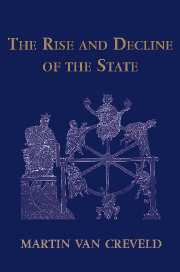Book contents
3 - The state as an instrument: 1648 to 1789
Published online by Cambridge University Press: 26 June 2009
Summary
Growing out of feudalism and harking back to Roman imperial times, the system of government that appeared in Europe during the years 1337–1648 was still, in most respects, entirely personal. The state as an abstract organization with its own persona separate from that of the ruler did not yet exist. Thus, in Italy around 1500 the term stood for “the machinery of government,” as when Guicciardini wrote of “the state of the Medicis” and “those in Florence who seek to change the state.” Thus to say, as many historians have done, that it was the state which overcame church, empire, nobility, and towns is incorrect. In fact it was the achievement of autocratically minded kings; or, as in Germany, rulers whose titles were less exalted but whose positions vis-à-vis their own societies as well as their colleagues bore an essentially monarchic character. To their contemporaries, the territories of Lodovico Sforza, Francis I, Charles V, and the rest were known as marquisates, counties, duchies, kingdoms, and of course the Empire. Each such territorial unit might contain “states” (French états): such as the aristocratic one, the ecclesiastical one, and the common one. Conversely, the “state,” meaning situation and resources (particularly financial resources) of each unit might be such and such. They themselves, though, came to be called states only during the first half of the seventeenth century.
- Type
- Chapter
- Information
- The Rise and Decline of the State , pp. 126 - 188Publisher: Cambridge University PressPrint publication year: 1999



